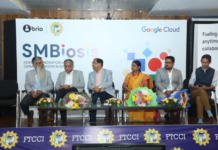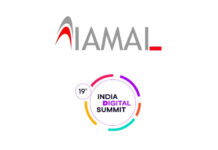Large global companies are moving towards open source as a means of reducing vendor lock-in and future-proof investment.
Driven by digital disruption, technology is evolving faster today than at any other stage in human history. Today, every company focuses on improving its digital foundation and strategies to ensure business continuity and improved customer engagement, be it a stock exchange, a bank or even a telco.
Over the past two decades, open-source technology has evolved to become the foundation of the modern IT landscapes. And companies have gradually recognized the advantages that could be accomplished by using open source.
“Open-source technologies allow an organization to build an ecosystem that promotes faster innovation, enabling them to scale up, modify and add new features according to the changing trends and customer demands,” said Marshal Correia, Vice President and General Manager, Red Hat India.
For some of the banks, open-source deployments are not just about cost, but about having the best product. Amol Pai, CTO, State Bank of India, for example, does not decide whether the solution is open-source or proprietary as long as it satisfies the customer’s requirements, complies with the bank’s security and infrastructure policies, as well as the life-cycle management policy.
SBI has deployed open-source technology across various layers of applications, including front end, middle layer, database layer, OS layer, and SDLC (Systems Development Lifecycle) management.
For the front end, the bank uses python, Java, Angular JS, Core JS. For the database layer, it has MongoDB, MariaDB, MySQL, PostgreSQL. From the deployment standpoint, SBI is using Docker, Eclipse, Jenkins, Git.
“Even if there is open source technology in place, we prefer the partner who brings the solution with a certain flavour because that flavour has been tried & tested, managed at times. It becomes easier for us to deliver a solution which is required by the customer rather than worrying about the technology aspect of it,” said Pai.
SBI is also working on containerization technology with Redhat, said Pai, which means in case of a rapid spike in digital traffic, the bank doesn’t have to scramble for additional hardware.
“No matter how fast and efficient my processes are, having a container in place spins out the number of resources required to manage the traffic. This will also help us get past a spurt in transactions,“ he added.
What compels tech leaders to adopt enterprise open source?
Growth, cost reduction and architecture improvement initiatives compel us to keep transforming our technology state year-over-year, says Vishant Vora, CTO at Vodafone Idea Limited. “This allows us to review technology stack, vendor lock-in and cost implications resulting in wider implementation and induction of open source technologies. As a principle, we are committed to moving towards using open source thereby reducing vendor lock-in to a large extent.”
“While building the stacks, choosing open-sourced components is one of the key criteria. We have seen it play the role of being a common denominator where multiple vendors converged. This helps accelerate the innovation cycle, spreads best practice usage, and reduces time to take innovation to market/customer. Going ahead, we see an accelerated take off in IoT and Edge Cloud use cases,” added Vora.
With the largest distributed cloud deployment in the world, Vodafone Concept is turning its distributed data center network across 100 locations in India into a ‘Universal Cloud’ where a single computing platform is capable of running multiple workloads, for example. Network, IT and third-party applications across cloud-distributed locations.
Teleco is opening its network with standard APIs to make it easier for third parties to boost cloud innovation and reduce costs. The new network platform helps Vodafone Idea in terms of reducing prices, increasing the use of cloud resources and the future-proofing of a network supporting enterprise digitisation.
“Our collaboration with Red Hat has helped us deploy Universal Cloud-based on open standards and systems. Effective working with various ecosystem stakeholders and rapid development cycles has enabled us to design efficient pods for widely distributed deployments running throughput intensive workloads. We now plan to extend this Universal Cloud as a platform to third-party workloads,” said Vora.
“We use open-sourced components across the stacks – for virtualization, for APIs (storage, networking), for logging, monitoring, application onboarding, life cycle management, etc.”, he added.
According to Vora, IT systems at VIL use open-source solutions such as Java, Drools, Eclipse as well as the new versions of R, Python, Cassandra, Postgres SQL and Struts among various other DevOps tools like ELK, Prometheus and Ansible. For data management, we extensively use Apache Hadoop, Hive, kafka, Cruise control and Apache superset to keep the cost of maintaining high-velocity data requirements low.






